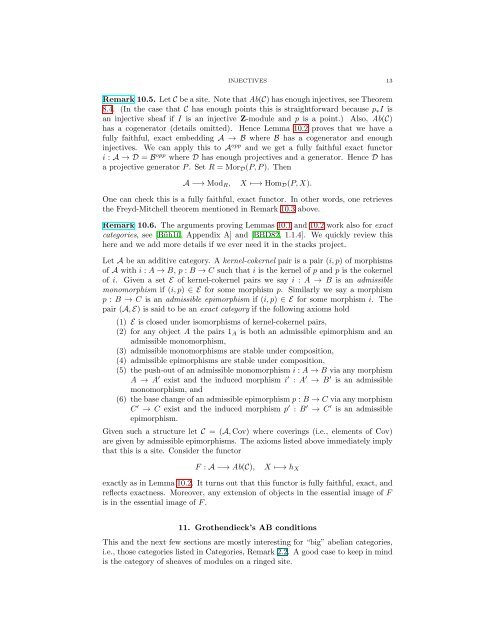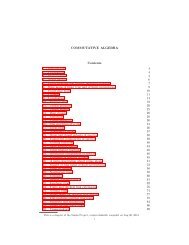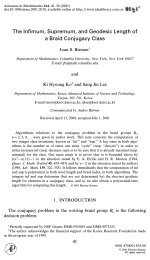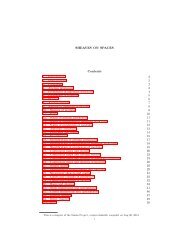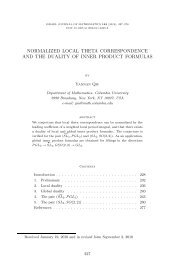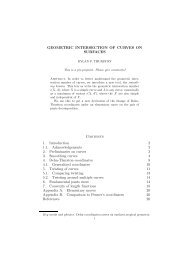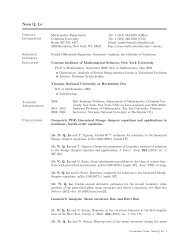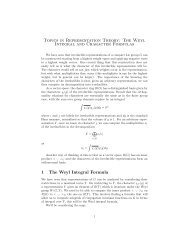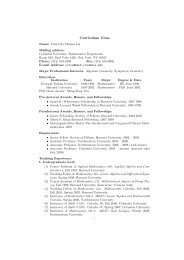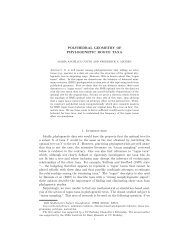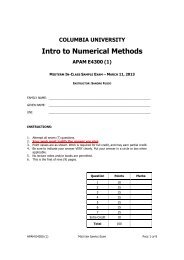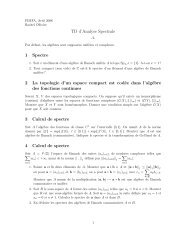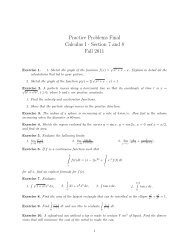INJECTIVES Contents 1. Introduction 1 2. Modules ... - Stacks Project
INJECTIVES Contents 1. Introduction 1 2. Modules ... - Stacks Project
INJECTIVES Contents 1. Introduction 1 2. Modules ... - Stacks Project
Create successful ePaper yourself
Turn your PDF publications into a flip-book with our unique Google optimized e-Paper software.
<strong>INJECTIVES</strong> 13<br />
Remark 10.5. Let C be a site. Note that Ab(C) has enough injectives, see Theorem<br />
8.4. (In the case that C has enough points this is straightforward because p∗I is<br />
an injective sheaf if I is an injective Z-module and p is a point.) Also, Ab(C)<br />
has a cogenerator (details omitted). Hence Lemma 10.2 proves that we have a<br />
fully faithful, exact embedding A → B where B has a cogenerator and enough<br />
injectives. We can apply this to A opp and we get a fully faithful exact functor<br />
i : A → D = B opp where D has enough projectives and a generator. Hence D has<br />
a projective generator P . Set R = MorD(P, P ). Then<br />
A −→ ModR, X ↦−→ HomD(P, X).<br />
One can check this is a fully faithful, exact functor. In other words, one retrieves<br />
the Freyd-Mitchell theorem mentioned in Remark 10.3 above.<br />
Remark 10.6. The arguments proving Lemmas 10.1 and 10.2 work also for exact<br />
categories, see [Büh10, Appendix A] and [BBD82, <strong>1.</strong><strong>1.</strong>4]. We quickly review this<br />
here and we add more details if we ever need it in the stacks project.<br />
Let A be an additive category. A kernel-cokernel pair is a pair (i, p) of morphisms<br />
of A with i : A → B, p : B → C such that i is the kernel of p and p is the cokernel<br />
of i. Given a set E of kernel-cokernel pairs we say i : A → B is an admissible<br />
monomorphism if (i, p) ∈ E for some morphism p. Similarly we say a morphism<br />
p : B → C is an admissible epimorphism if (i, p) ∈ E for some morphism i. The<br />
pair (A, E) is said to be an exact category if the following axioms hold<br />
(1) E is closed under isomorphisms of kernel-cokernel pairs,<br />
(2) for any object A the pairs 1A is both an admissible epimorphism and an<br />
admissible monomorphism,<br />
(3) admissible monomorphisms are stable under composition,<br />
(4) admissible epimorphisms are stable under composition,<br />
(5) the push-out of an admissible monomorphism i : A → B via any morphism<br />
A → A ′ exist and the induced morphism i ′ : A ′ → B ′ is an admissible<br />
monomorphism, and<br />
(6) the base change of an admissible epimorphism p : B → C via any morphism<br />
C ′ → C exist and the induced morphism p ′ : B ′ → C ′ is an admissible<br />
epimorphism.<br />
Given such a structure let C = (A, Cov) where coverings (i.e., elements of Cov)<br />
are given by admissible epimorphisms. The axioms listed above immediately imply<br />
that this is a site. Consider the functor<br />
F : A −→ Ab(C), X ↦−→ hX<br />
exactly as in Lemma 10.<strong>2.</strong> It turns out that this functor is fully faithful, exact, and<br />
reflects exactness. Moreover, any extension of objects in the essential image of F<br />
is in the essential image of F .<br />
1<strong>1.</strong> Grothendieck’s AB conditions<br />
This and the next few sections are mostly interesting for “big” abelian categories,<br />
i.e., those categories listed in Categories, Remark <strong>2.</strong><strong>2.</strong> A good case to keep in mind<br />
is the category of sheaves of modules on a ringed site.


